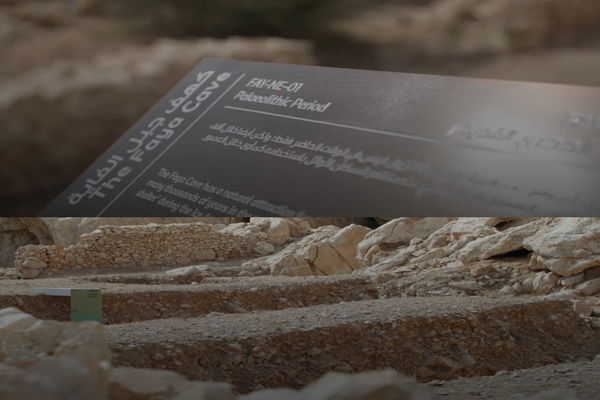Faya Site Reveals Humanity’s 210,000-Year Desert Adaptation

Sharjah’s Faya Palaeolandscape – UNESCO Nomination
Context:
- Location: Sharjah, UAE; ~55 km from both Arabian Gulf and Gulf of Oman.
- Area: 29,085 hectares.
- Significance: Nominated for UNESCO World Heritage Status.
- Timeframe: Human habitation evidence spans over 210,000 years.
- Key Feature: Stone Age desert landscape linking Arabia with India via ancient trade networks.
Geography & Geology:
- Features Faya Range, 20 km stretch of limestone formations.
- Acts as a natural barrier between Rub’ al-Khali desert and Dhaid-Madam Plain.
- Geological formations: 3 distinct rock layers, 93–66 million years old, formed by tectonic collision of Arabian & Eurasian plates.
- Flint-rich hills provided raw material for tools.
- During wetter periods, hills acted as barriers for water flow from Hajar Mountains, creating springs.
Archaeological Significance:
- Evidence for Out of Africa migration along southern route (~120,000 years ago).
- Continuous human occupation over 18 phases: Early Middle Palaeolithic → Neolithic.
- Findings include: stone tools, animal/human bones, jewelry, hearths, burial practices.
- Demonstrates human resilience and adaptation even in hyper-arid climates.
- Shows humans evolved strategies for survival during arid phases, including mobility and settlement planning.
Cultural & Trade Significance:
- Served as link in ancient trade networks connecting Arabia with India.
- Bronze Age material culture shows connections with Mesopotamia and Indus Valley.
- Discoveries include: Indian cooking pots, ivory artifacts, coins with Shiva image, coin molds.
- Evidence underscores economic, political, and cultural interactions between Arabia and India.
Unique Features for UNESCO Nomination:
- Continuous archaeological record from Middle Palaeolithic → Neolithic.
- Desert landscape setting and geohydrological features.
- Human adaptation to extreme climates.
- Strong evidence of ancient cross-continental trade links.
Significance:
- Provides insights into early human evolution and resilience.
- Demonstrates adaptation strategies to environmental extremes.
- Highlights ancient India-Arabia cultural and trade connections.
- Offers a unique combination of natural and cultural heritage, justifying UNESCO consideration.
Updated - March 17, 2025 2:49 PM | News On Air
Sharjah Faya Palaeolandscape UNESCO nomination UAE 210 000 years human habitation Out of Africa migration Middle Palaeolithic Neolithic Faya Range Rub’ al-Khali desert Dhaid-Madam Plain flint Stone Age hyper-arid adaptation Hajar Mountains springs Bronze Age Indus Valley trade Mesopotamia connections coins with Shiva continuous archaeological record human resilience desert landscape geohydrological features